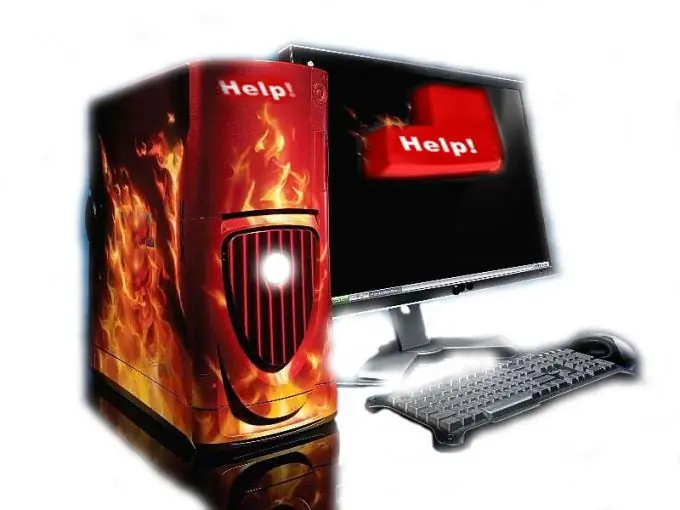Almost any problem with your computer can be caused by a malfunctioning motherboard. But you must understand that the reason may be in the improper operation of other units and devices. How to distinguish one from the other, this will be discussed below. But please remember - you can connect or disconnect devices inside the computer only when the power is off.

Instructions
Step 1
In case of any malfunction, turn off the computer, remove the cover from it so that you can see its contents. Inspect the motherboard. Make sure that there is no gross mechanical damage. Check for swollen capacitors, blackened parts. Use a magnifying glass to make sure there are no scratches or cracks in the tracks.
Step 2
Your further actions depend on external signs of malfunction: - if the computer does not show signs of life when you turn it on, go to step 3;
- if the fans start up when the computer is turned on, the LEDs on the motherboard light up, but the monitor remains dark and the system speaker does not emit sounds - go to step 5;
- if the system speaker emits one short signal, then, most likely, the motherboard is working properly, and the reason is in the video card or monitor;
- if the computer boots normally when turned on, but then it is unstable, i.e. sometimes it freezes or reboots spontaneously - go to step 9.
Step 3
Eliminate the malfunction of the power supply, for example by replacing it with a known good one.
Step 4
Pull out and reinsert the cable connectors between the power supply and the motherboard. Turn on your computer. Perhaps everything will work, and the reason was poor contact in these connectors.
Step 5
Pull out all devices except the video card from the slots of the motherboard. It is easy to distinguish a video card - the cable from it goes to the monitor. Disconnect hard drives, CD and DVD drives, and floppy drives from the motherboard and from the power supply. Disconnect all external devices except the monitor and keyboard.
Step 6
Turn on your computer. If an image appears on the monitor, go to step 7, otherwise go to step 8.
Step 7
Turn off your computer. Connect the hard drive. Turn on your computer. If the monitor darkens again, the device is defective and requires replacement or repair. Replace it with a good one. Complete this step for all previously disconnected devices. It may happen that after all devices are returned to their place, the computer will work normally. This means that the reason was poor contact of one of the devices.
Step 8
If after removing all devices except the video card, the monitor remains dark, then check the health of the processor, memory modules, and video card. You can check them by installing them into a working motherboard. It is risky to do the check the other way around, i.e. insert working devices into your suspicious motherboard, this can damage them.
Step 9
Also, instability can be caused by overheating of the elements of the motherboard or power supply. Check that all fans run normally and that the cooling radiators do not get hot during operation. To do this, you can turn off your computer and just touch them with your finger. They may be warm, but nothing more.






